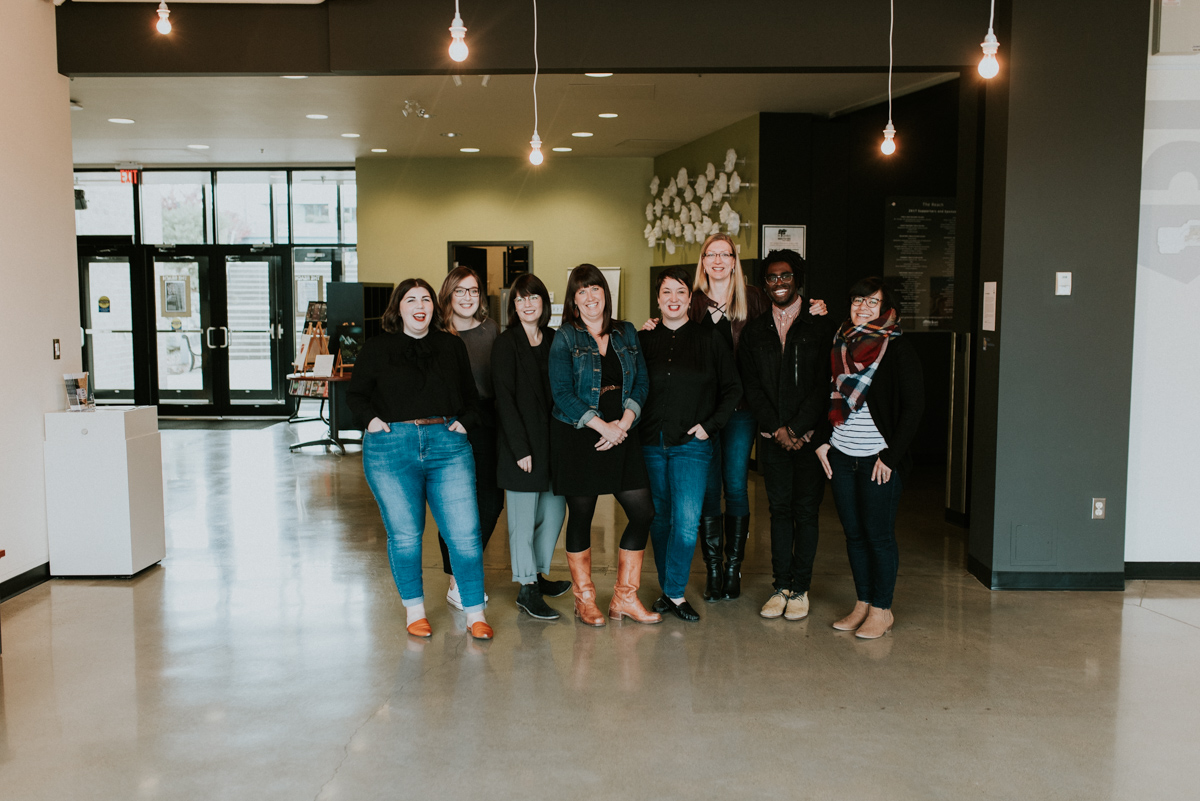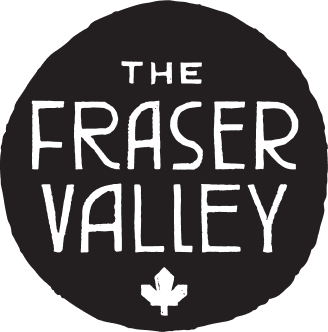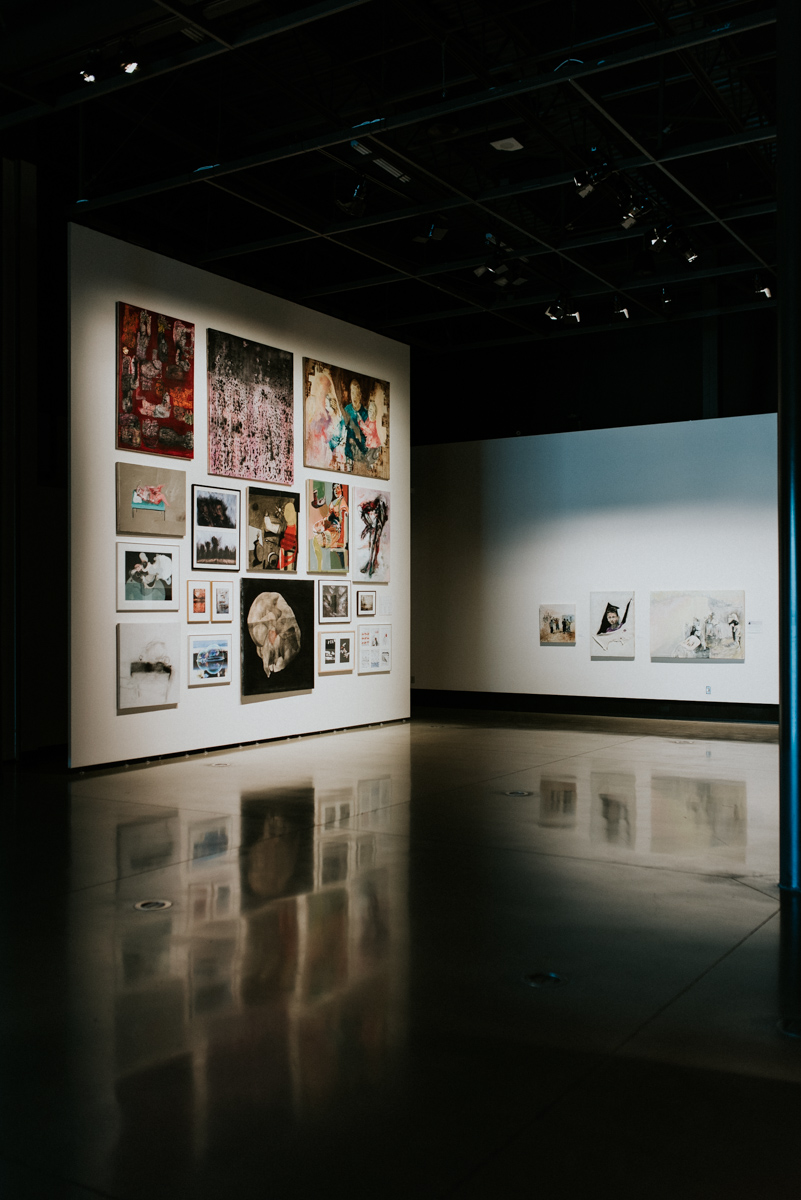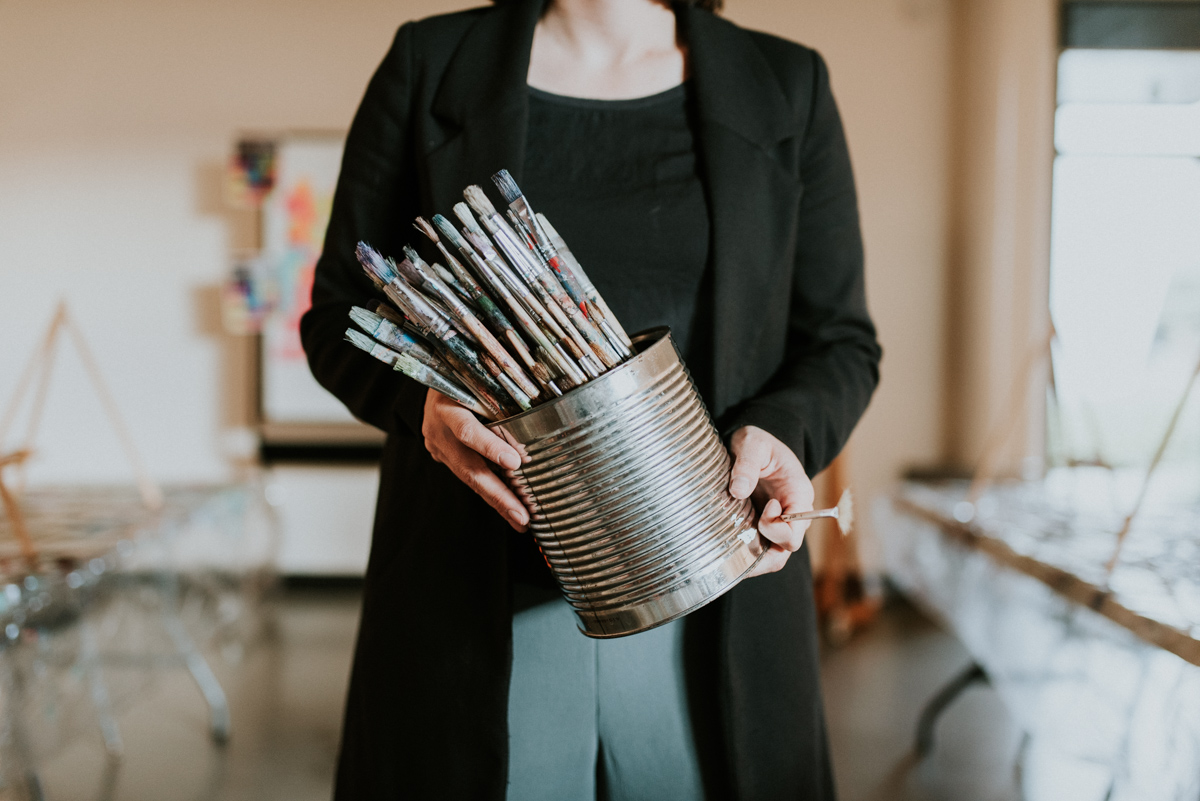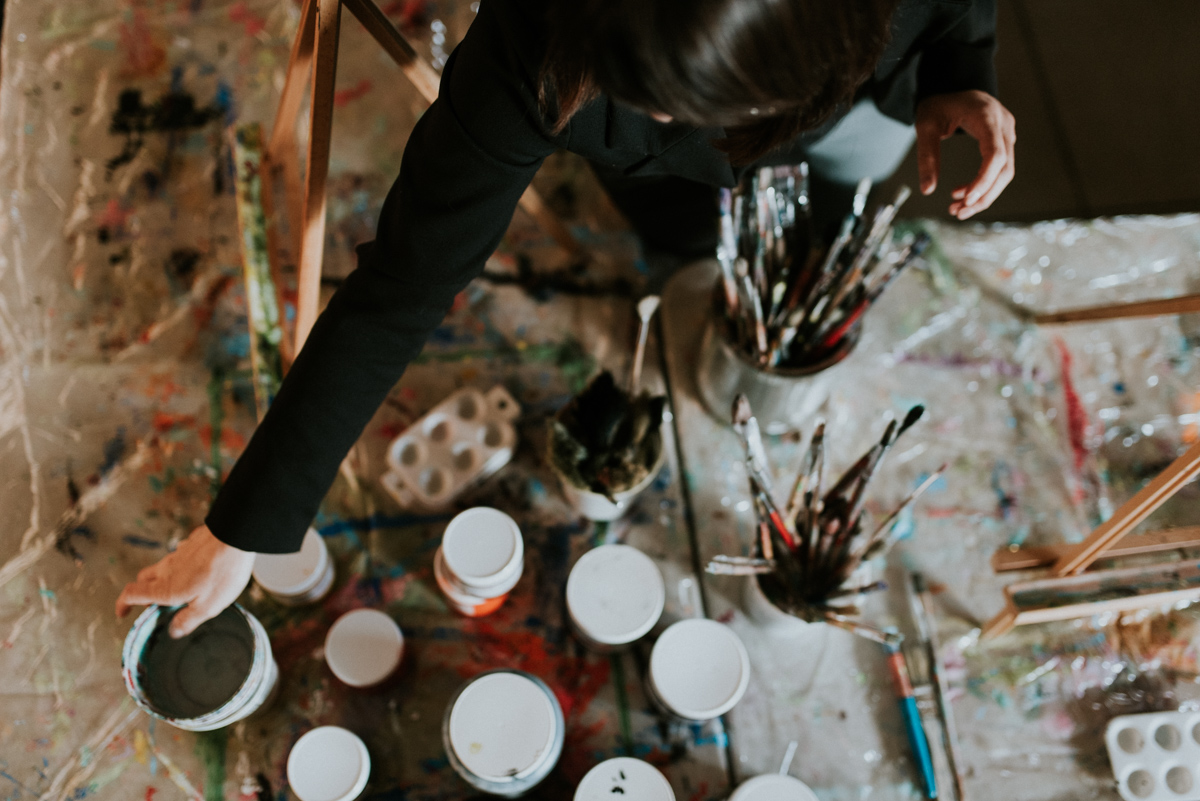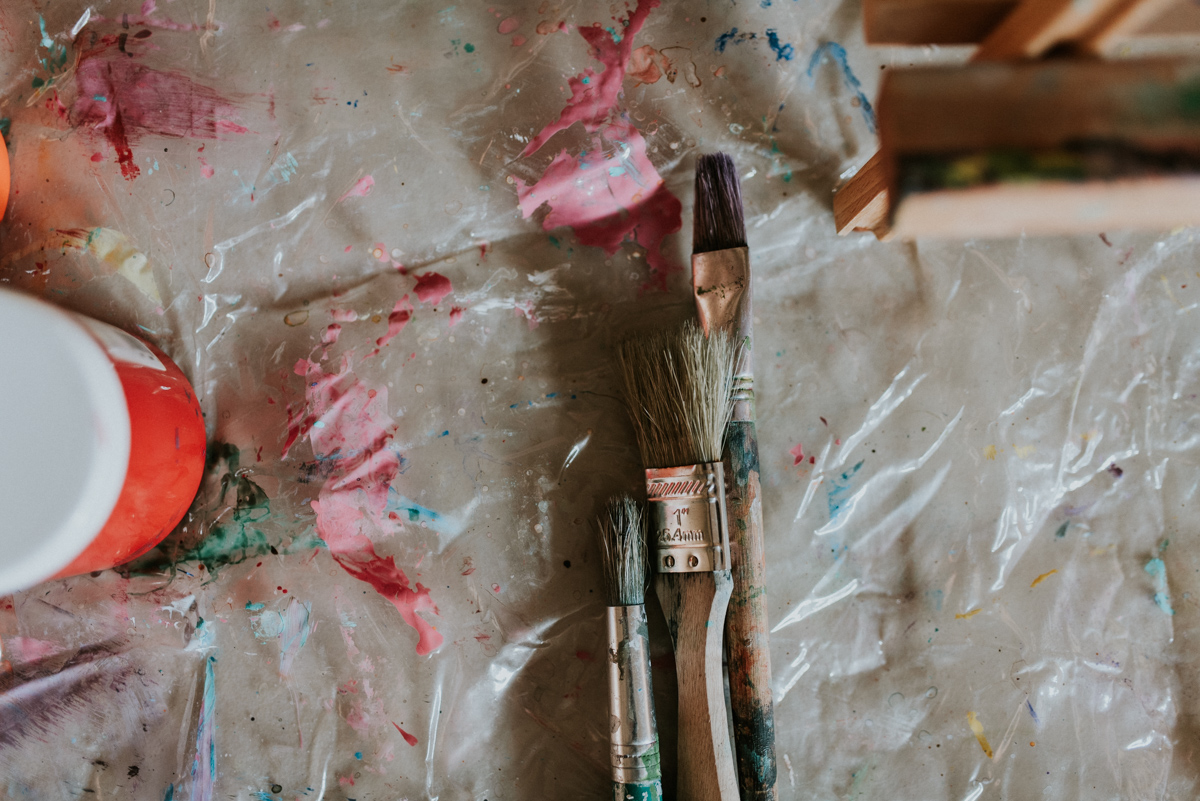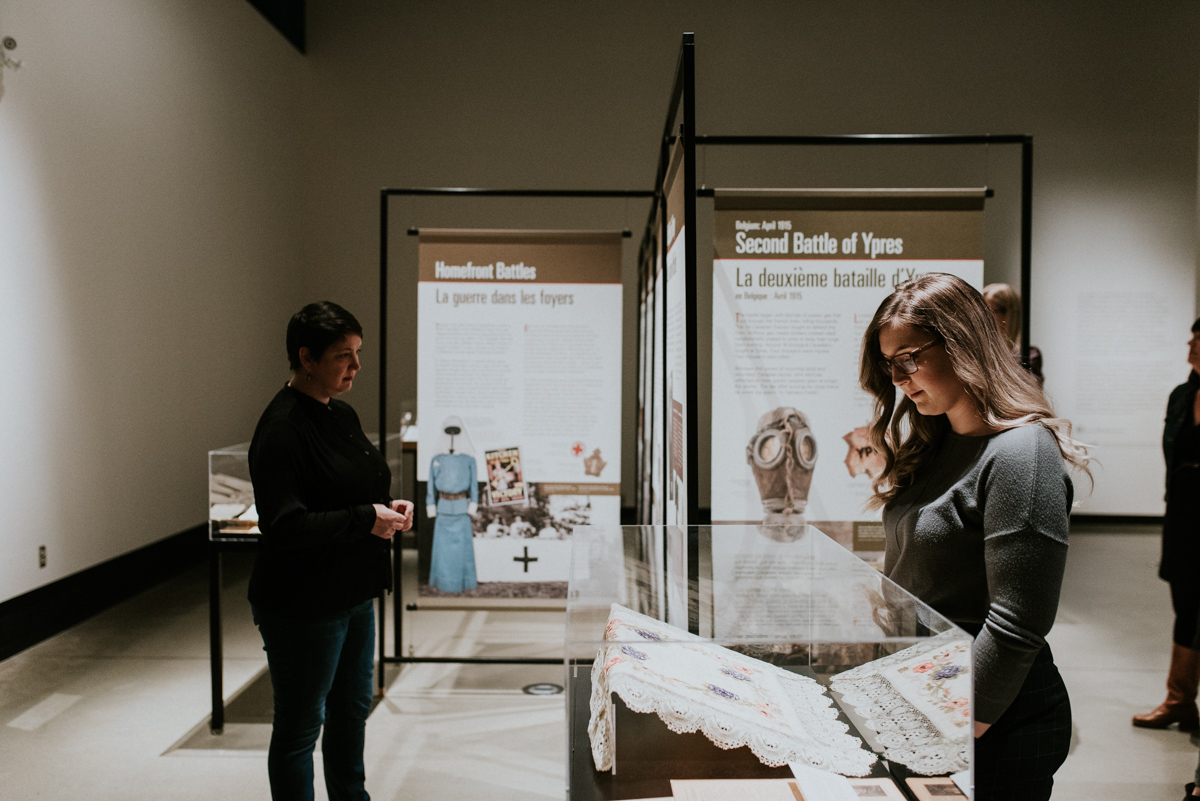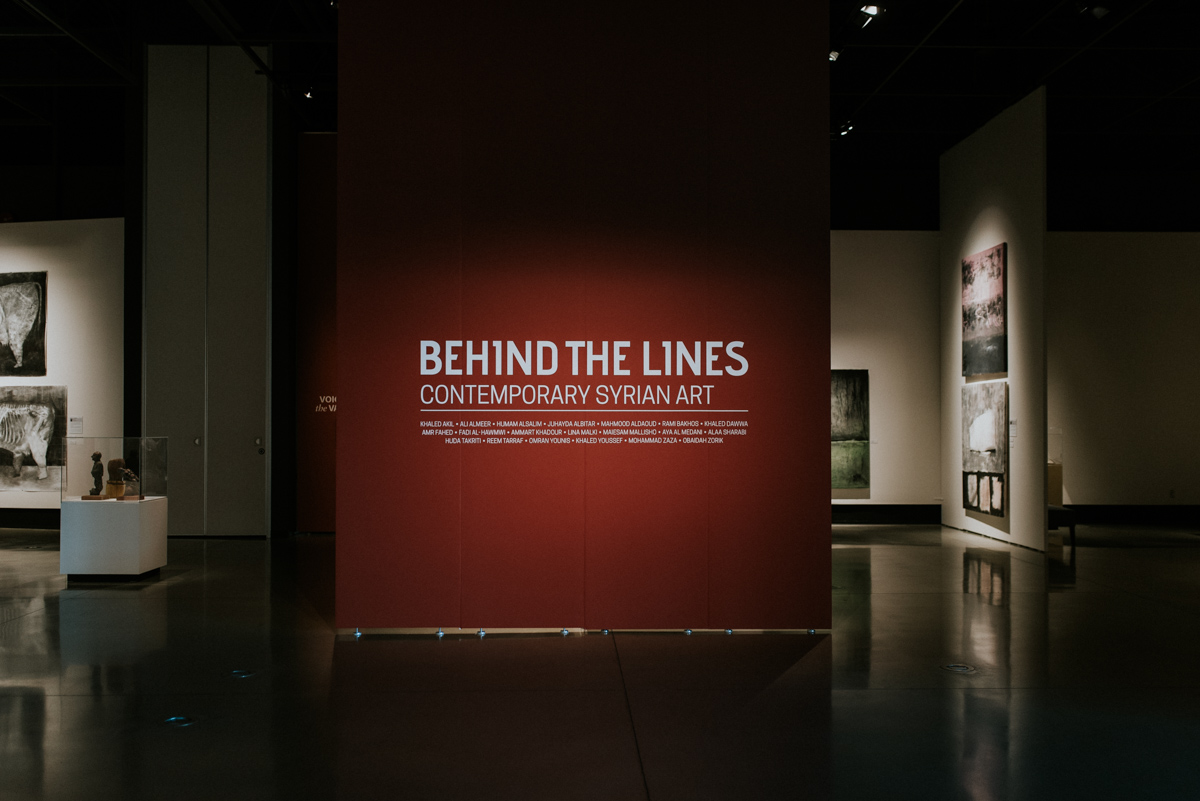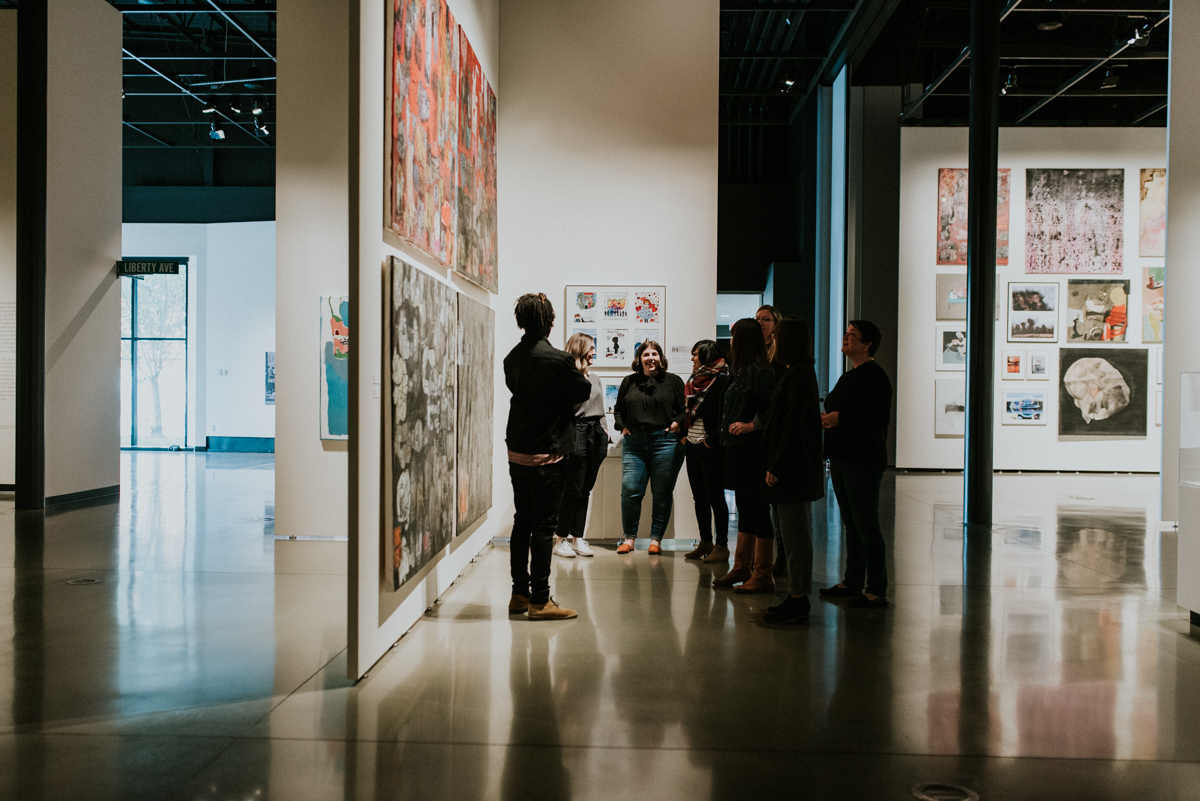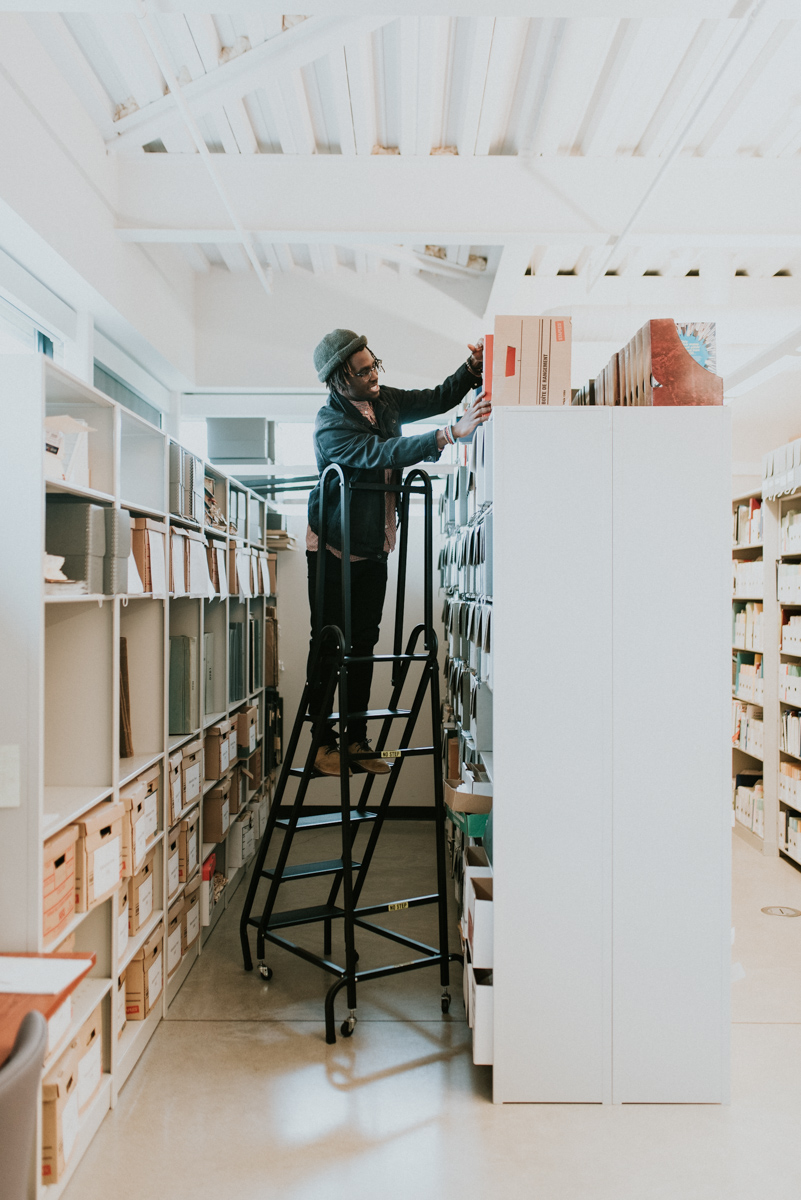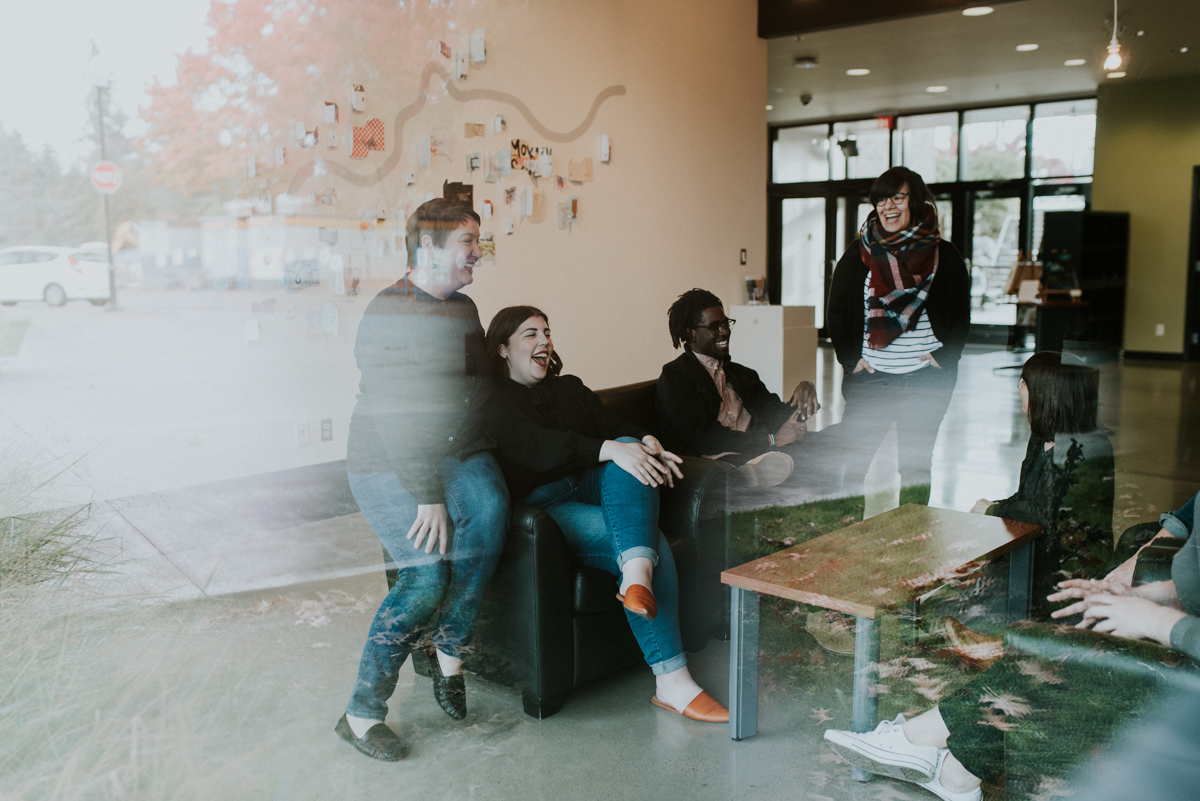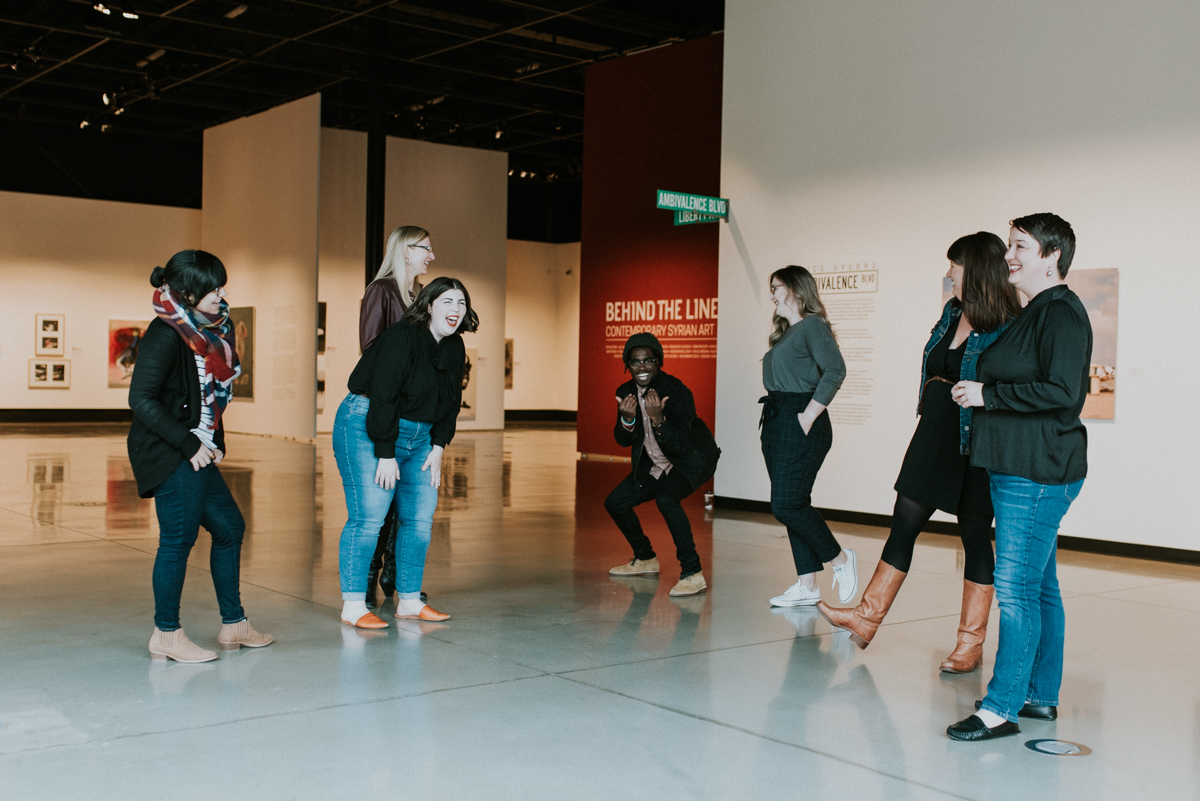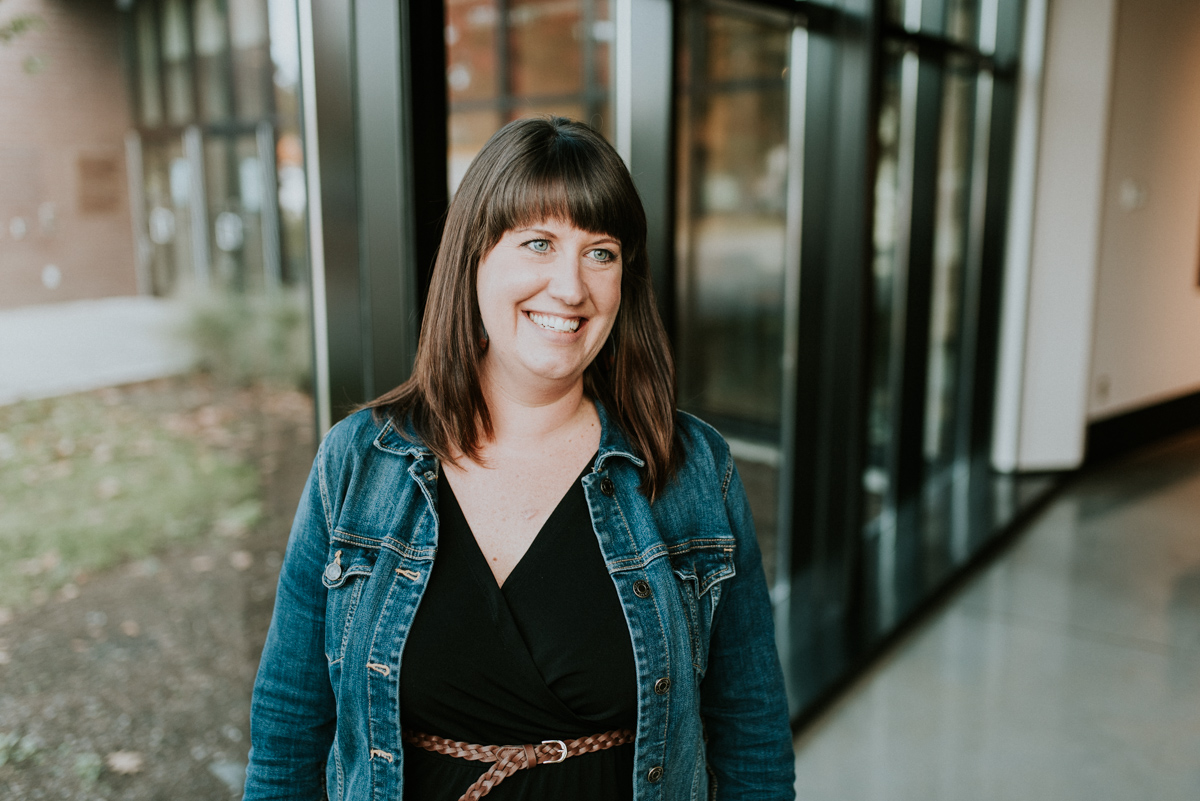A time outside the office and into the gallery. We spent a morning gathering with the team behind Abbotsford’s The Reach Gallery Museum. With The Reach employee offices upstairs, it was not hard to convince them to step away from the desk and join us for an art walk. Beginning to end, our time welcomed a stream of laughter, storytelling and sharing amongst The Reach team.
Join us as we started in the gallery and walked through its current four exhibitions, then made our way behind gallery walls to navigate through the rows of archives in the back.

Marc Forcier, Connie Hackett, Andrea Pepper, Elizabeth Campbell, Francesca Moore, Laura Schneider, Kris Foulds and Anna Williams.
TFV: Who joined us for the shoot, and what are their roles at The Reach?
Laura Schneider, Executive Director
Kris Foulds, Curator of Historical Collections
Anna Williams, Curator of Learning and Community Engagement
Adrienne Fast, Curator of Art and Visual Culture
Elizabeth Campbell, Accounting & Operations Administrator
Francesca Moore, Marketing & Design Coordinator
Connie Hackett, Visitor Services Coordinator
Andrea Pepper, Curatorial Intern
Marc Forcier, Cultural Programs Intern
TFV: What is the meaning behind the name, “The Reach?”
TR: We get this question a lot, probably because when it’s shortened to “The Reach” (instead of The Reach Gallery Museum) the name is a bit ambiguous. That ambiguity is great because it can spark curiosity and we like that the name is a verb, which suggests action. Ultimately the “Gallery Museum” part of our name is the key, as we are a community history museum and public art gallery. Beyond that, there are lots of ways to interpret the name: for example it could connote reaching out beyond our walls to connect with our community, or reaching new understandings of history and culture through our activities.
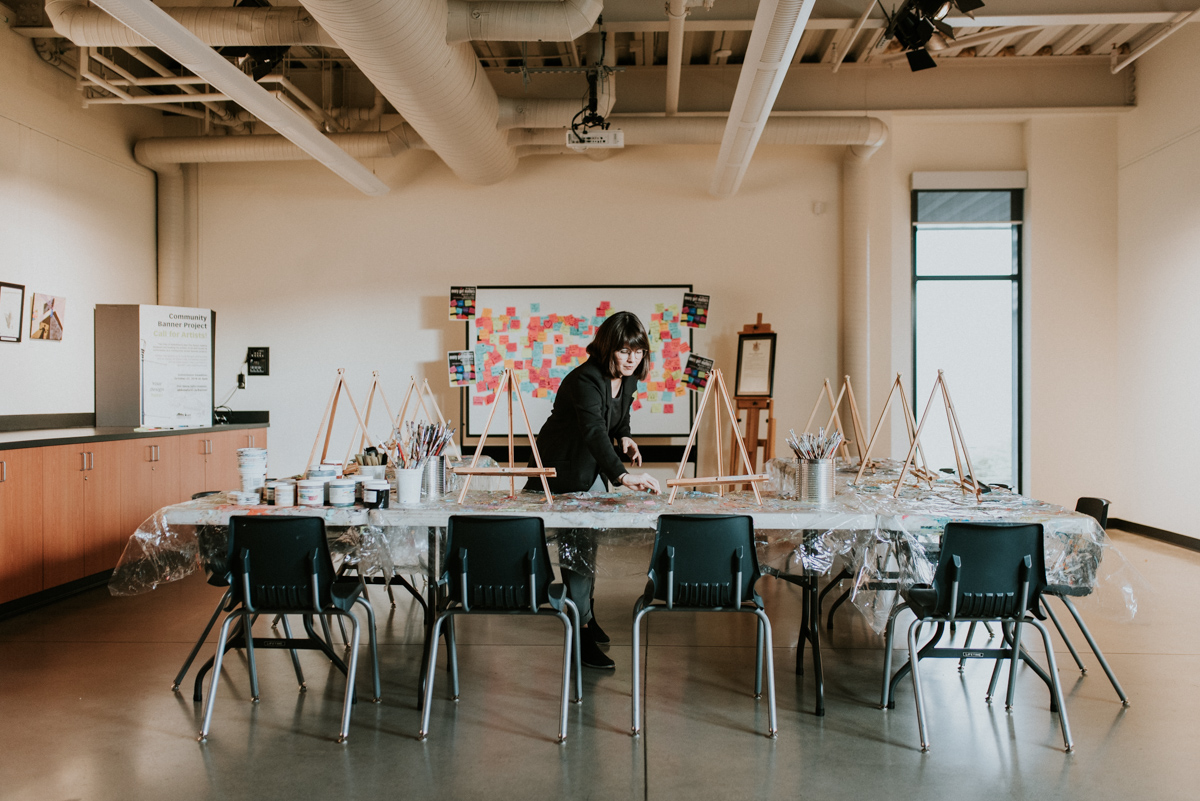
TFV: Any uprising Fraser Valley artists to keep a look out for?
TR: One of the things we’re really proud of at The Reach is our ability to connect with future generations of artists, historians, archivists, and culture professionals. We have several programs that provide professional development for young people who are preparing for careers in museums and art galleries. We regularly work with interns and practicum students from regional universities. For example, we’ve had some really wonderful undergraduate and graduate-level students work on digitizing our collections, researching context for photos in our digital archive, and contributing to other specific research projects related to our historic holdings. On the art side of things, our Emerge program provides exhibition and curatorial opportunities for emerging artistic talent. The program targets 18-35 year olds in the Fraser Valley and is designed to create workplace opportunities that will build participant portfolios and CVs. Four times a year we present new artwork by emerging Fraser Valley artists, curated by emerging curators in the Art on Demand exhibition series. There’s no shortage of talent in this area and we’ve seen lots of exciting work in the program. We’ve also got some fresh Emerge programs starting in 2019 that we anticipate will raise the profile of young artists in our community. We can’t reveal the details yet, but watch for some great new art in public spaces!
TFV: How do you hope to get the community more involved with art?
TR: Because we have a dual mandate as both a public gallery and a history museum, we are interested in getting our community involved in culture through activities that will enrich perspectives, inspire ideas, and allow for personal expression. We offer a variety of exhibitions, events, and programs that help people connect with art and heritage more deeply. Our activities are developed with a wide range of audiences in mind so we try to have something for everyone. For example, Wednesday mornings at 10:30 we offer a program called, “C3” (which stands for Culture, Coffee & Cookies). It is a speaker’s series that encompasses a spectrum of cultural topics including history, travel, and the arts. Another popular program is “Sunday Family Arts” which invites families out to take part in hands-on creativity inspired by our exhibitions. It takes place twice a month on Sunday afternoons and is always a hit with families. On top of these regular programs, we have a huge variety of special activities throughout the year as well. We recently hosted an opera recital by Dhanya Dasa, one of Canada’s most exciting emerging tenors. And we’re currently we are hosting an Indigenous film series called Reel Change that features bi-weekly screenings of some of the most impactful films by Indigenous filmmakers. One of the wonderful things about developing arts and heritage programming is the breadth of ideas we can draw from to engage our community. Our calendar is packed with things to do, and to top it all off, admission to The Reach and nearly all of our public programs is free!

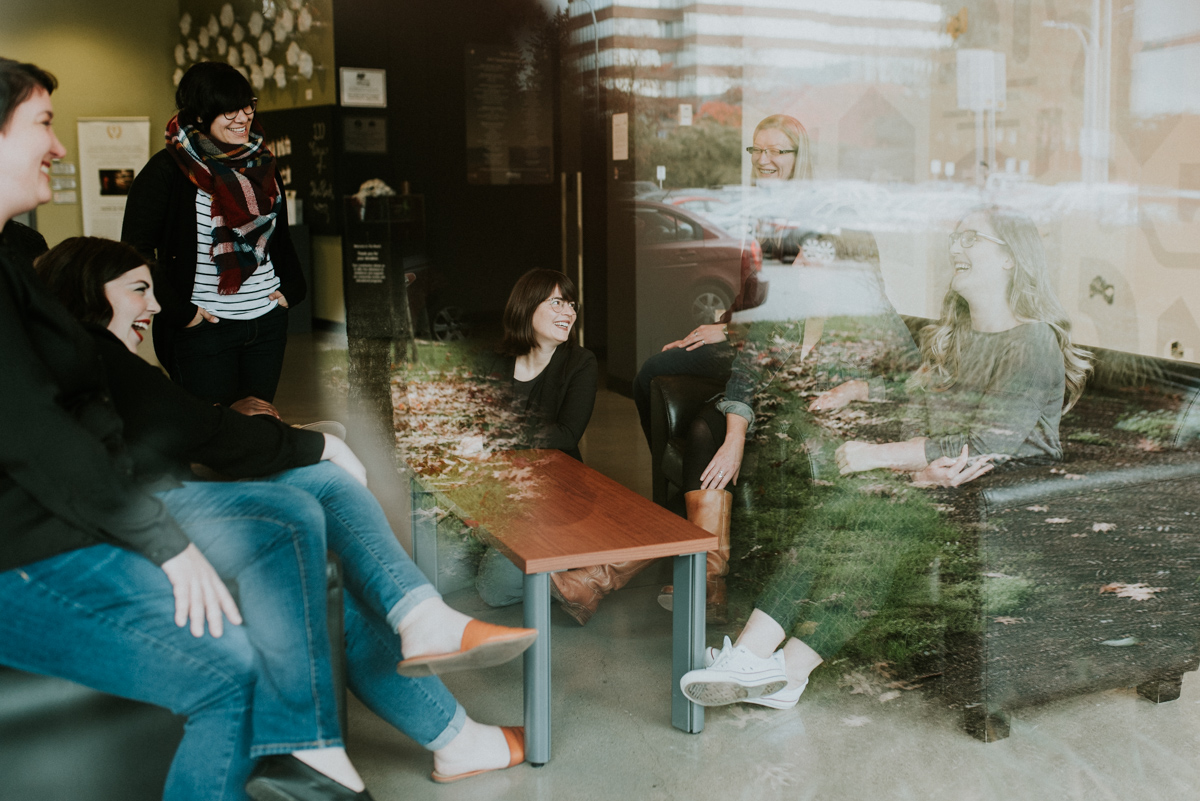
TFV: What is your hope for people after they’ve experienced coming to The Reach?
TR: We hope that our audiences leave with a greater understanding of the history of our community and a greater appreciation for the arts. Both our museum and art exhibitions are intended to be provocative and we hope that audiences go away thinking about what they have experienced—that their visit continues to resonate with them after they have left. It could be that they leave with a greater understanding of how decisions made in the past continue to impact our lives today, or perhaps they feel challenged by a work of contemporary art that they have encountered. Both aspects of our mandate illustrate the products of human creativity and give voice to social practices throughout history. Our greatest hope is that audiences leave having learned or discovered something they feel worthy of sharing.
TFV: What’s next?
TR: The Reach has three seasons of exhibitions that open annually in January, May, and September, so there is always something new to see. Our seasons usually include 3-4 thematically linked exhibitions, and lots of public programming like talks, workshops, discussion panels, and other opportunities for audiences to engage in the ideas presented in our space. Our next season kicks off in late January and it presents exhibitions that explore the human body: specifically the body that does not fit the ideal standard in our society. This could be the obese, differently-abled, unhealthy, or otherwise taboo or imperfect body. The exhibitions will explore what it means to inhabit this kind of body in a society that emphasizes physical perfection. We’re really interested in asking big questions and exploring big ideas at The Reach so there’s always lots on the go.
TFV: Are there any local artists that inspire you? Why?
TR: There are a lot of interesting artists, historians, and scholars working here in the Fraser Valley and we try to create a public platform for them to share what they do as often as possible. There are so many examples of this it is tough to choose, but two that spring to mind are The Fraser Valley Biennale, which is an exhibition of exceptional works of art produced in our region over the past two years. And the second are two book projects currently in the works that explore regional history, both based on research conducted using our collections. The first is a look at grassroots political initiatives that have arisen in our community, and the other investigates the identities of WWI veterans who were forgotten in the historical record, but whose have been rediscovered through research done in part at The Reach.
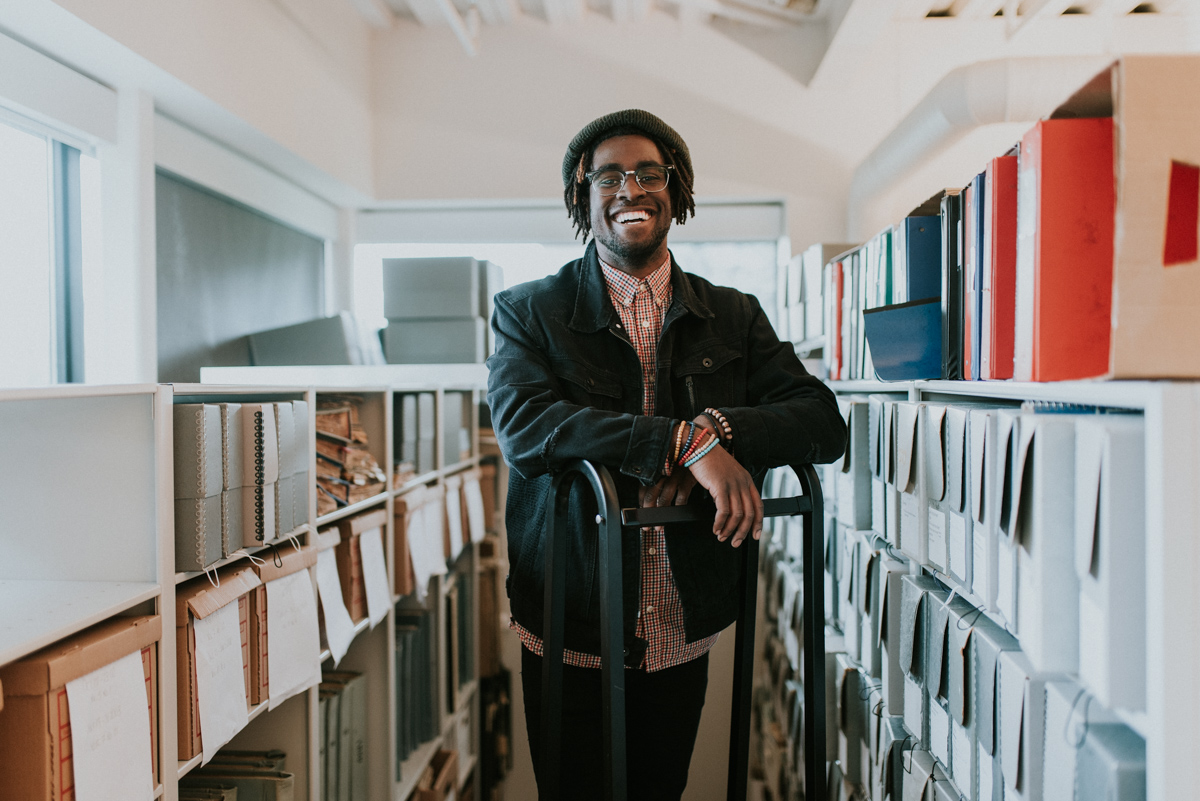
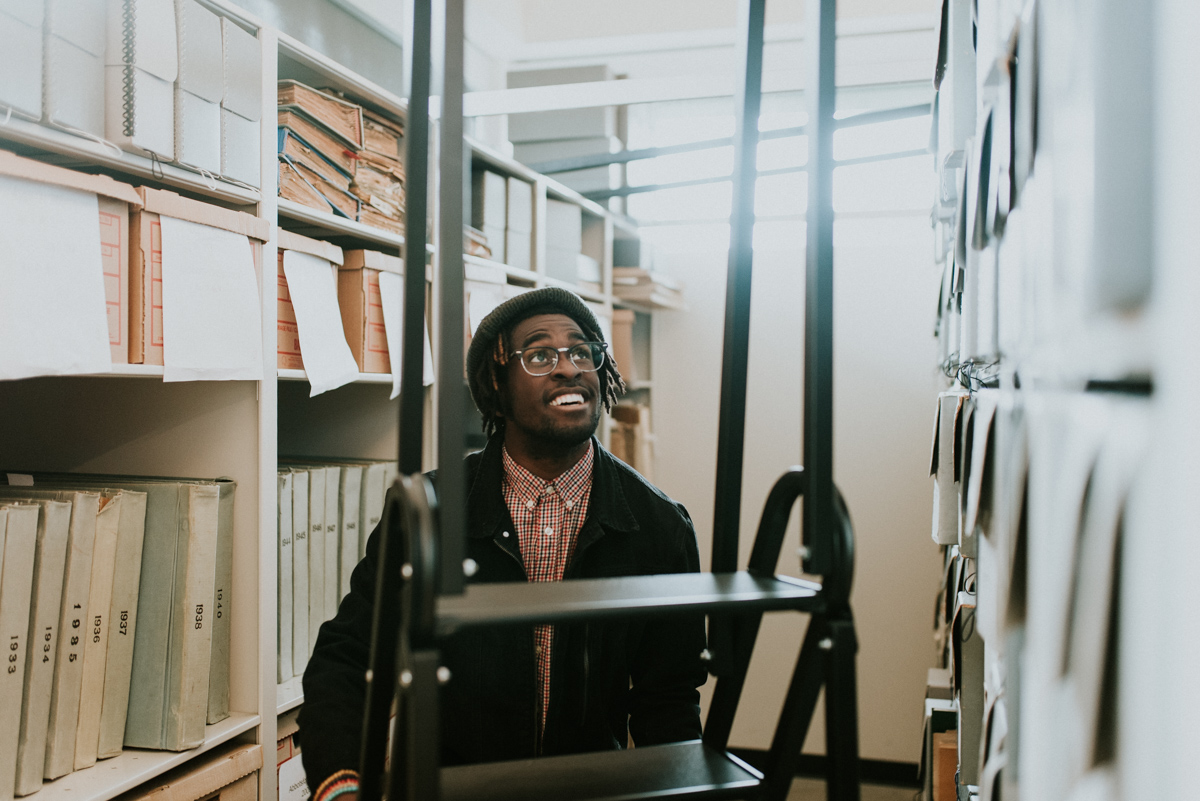
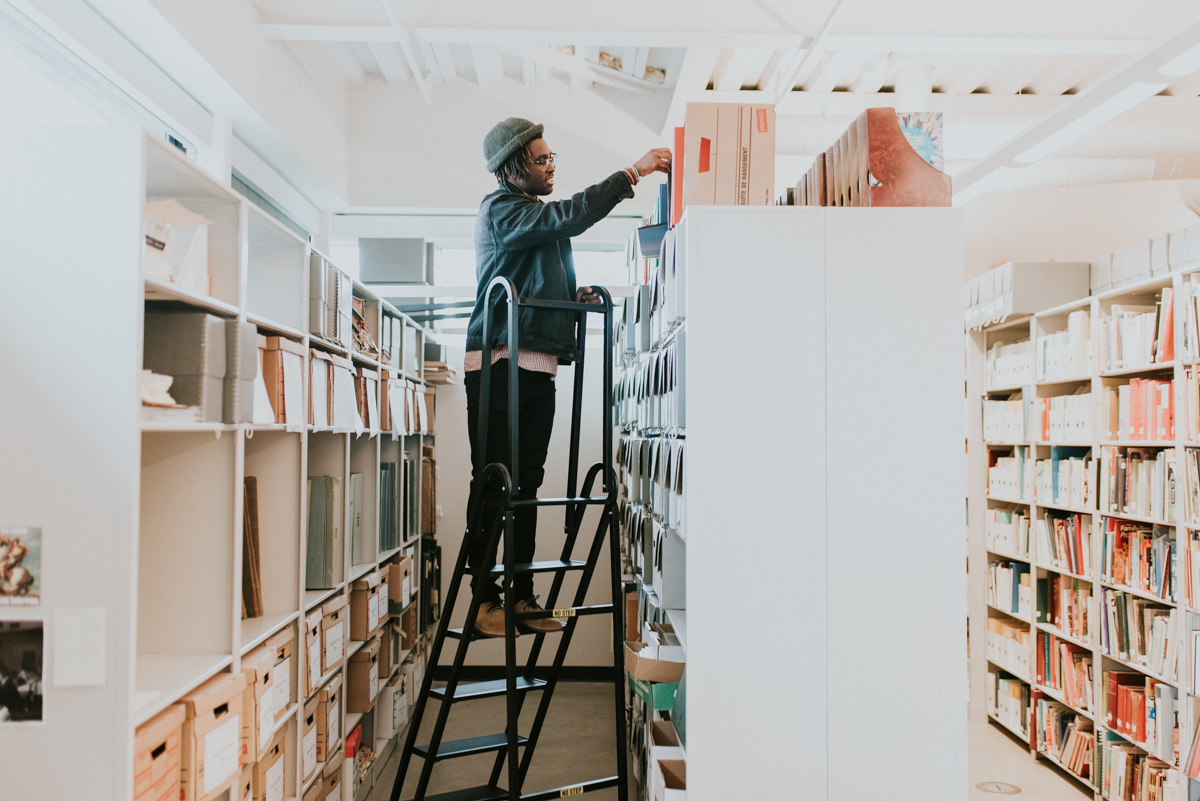
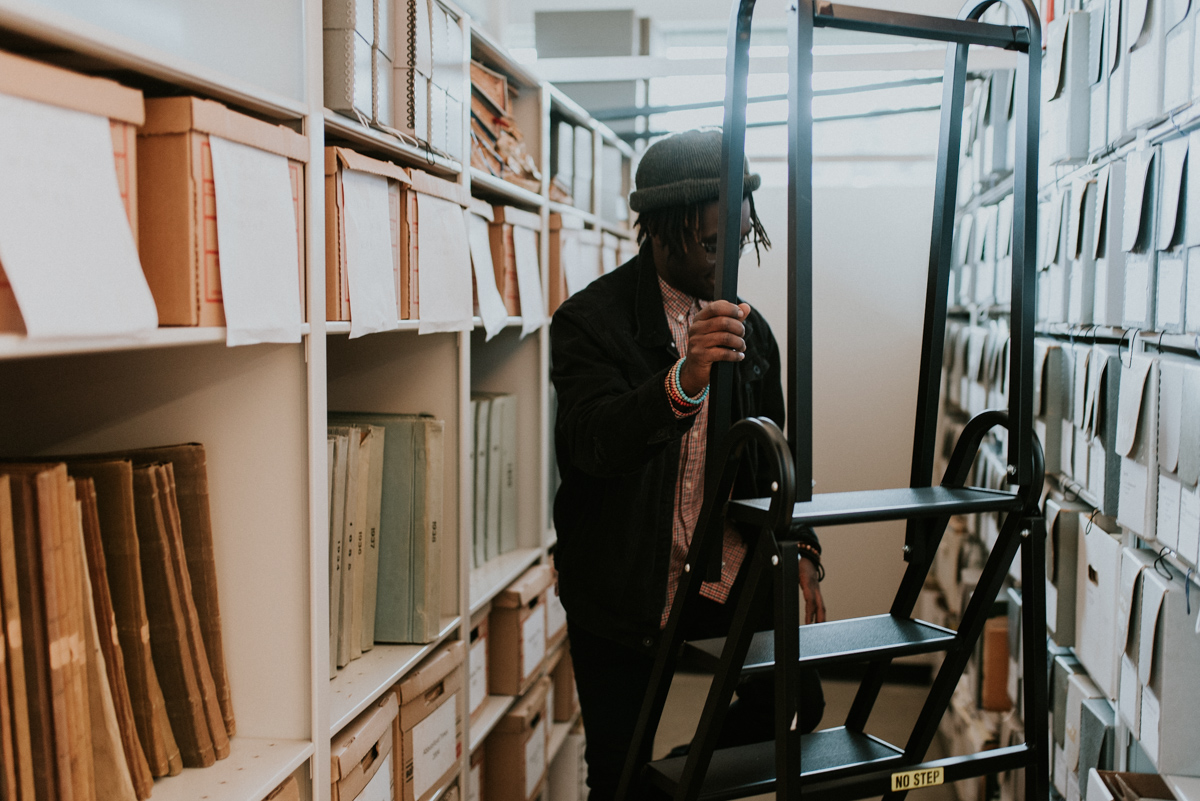
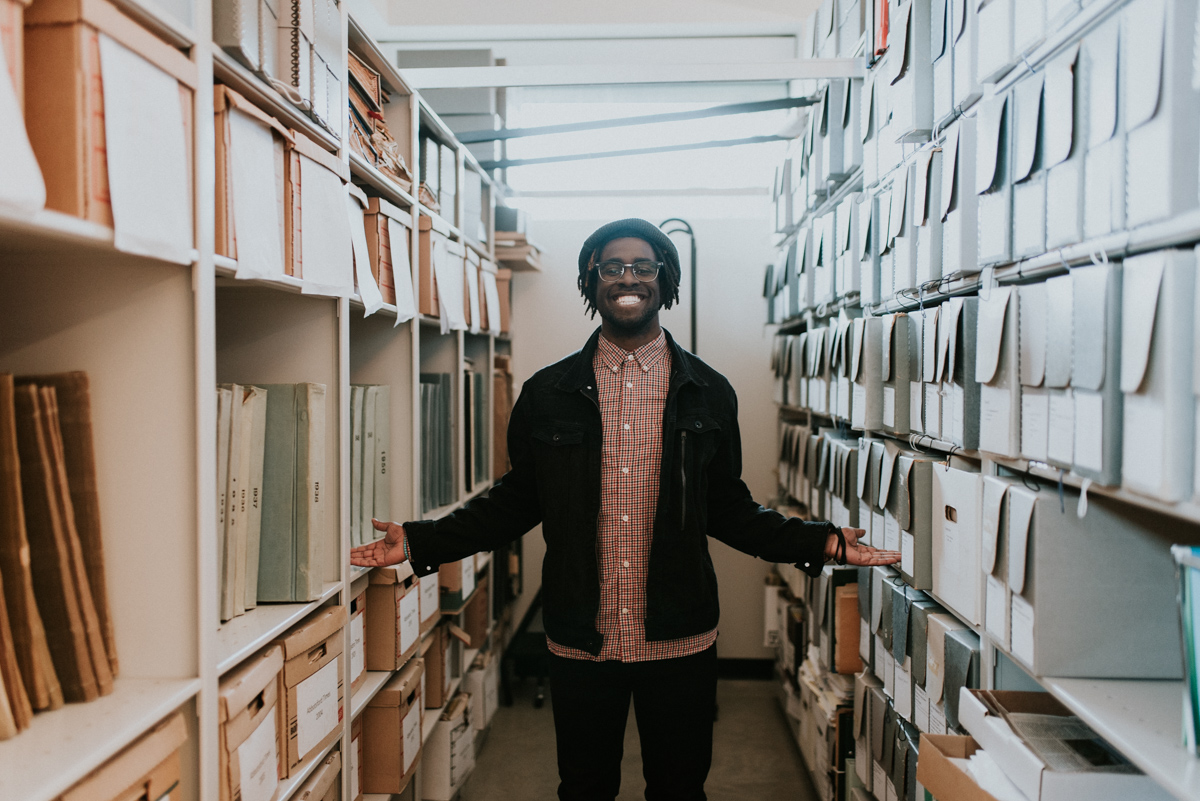
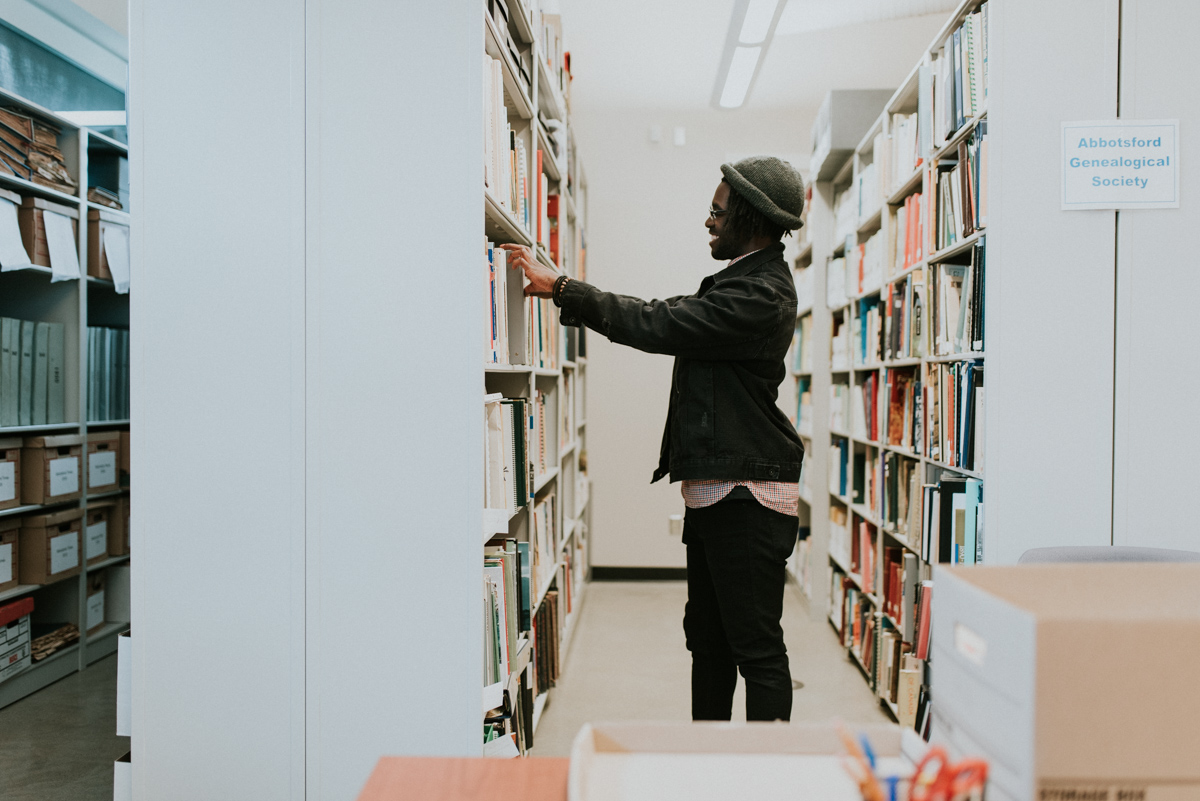
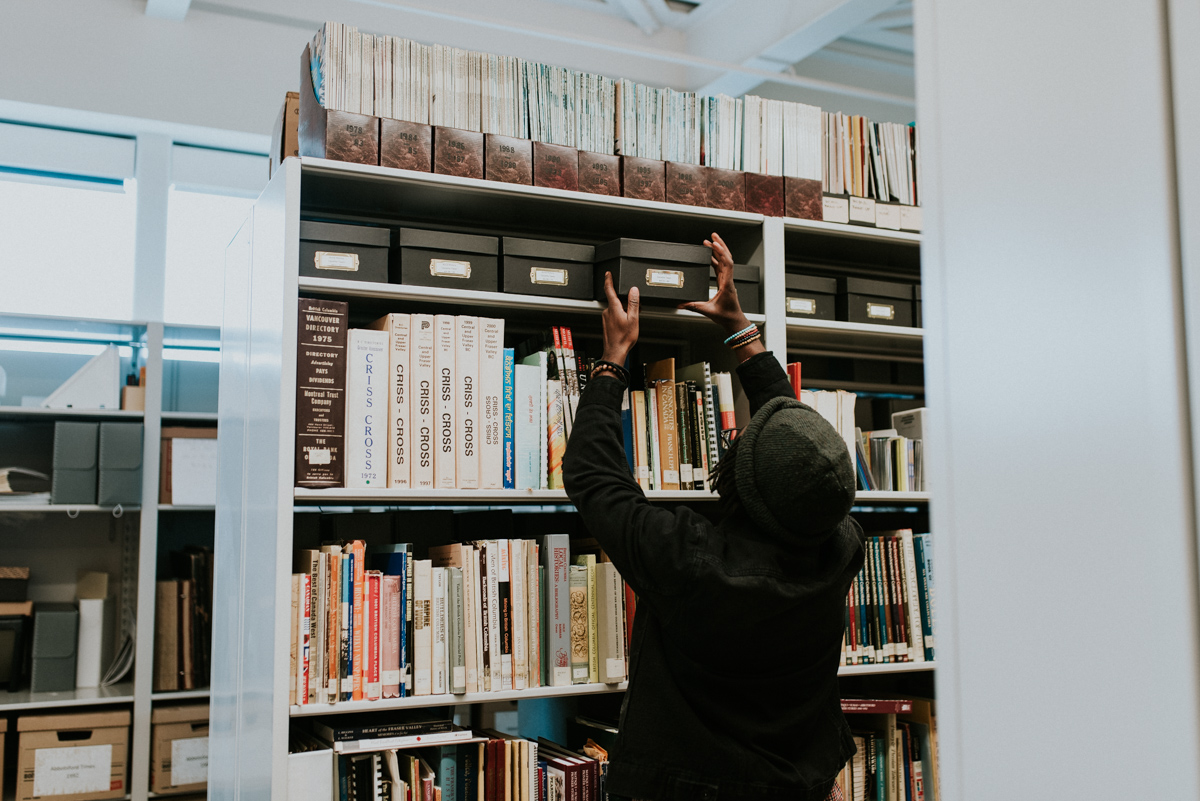
TFV: Who are a few of your favourite locals to follow on social media?
TR: Obviously we are huge supporters of the other arts and culture organizations in our community, like the Abbotsford Arts Council, Heritage Abbotsford, the Chilliwack Museum, the Mission Museum, and the many theatre groups here in Abbotsford. There are also a lot of great creative people in town who are really active on social media including Tanya Loewen who is an amazing local tattoo artist and has even tattooed at The Reach for one of our events. Chalie Howes is also a great local mom-blogger who frequently visits us with her kids and loves to create fun art projects inspired by work at The Reach (and she also exhibited here back in 2013). Colla Films recently worked with us on our 10th Anniversary video and we have loved following along on all their film projects. We are major fans of artist Carrielynn Victor and we love seeing the process behind her work.
TFV: What’s your favourite medium of art?
TR: Our preferred medium for any kind of creative pursuit is ideas! There’s no way to privilege one form of making over another in the visual arts, every medium has its own specific history, and therefore its own cultural meanings and limitations. To put it another way, not every medium is a useful vehicle for every idea. So instead of focusing on the materials specifically, we like to make sure that the rigorous exploration of ideas is at the heart of everything that we do at The Reach.

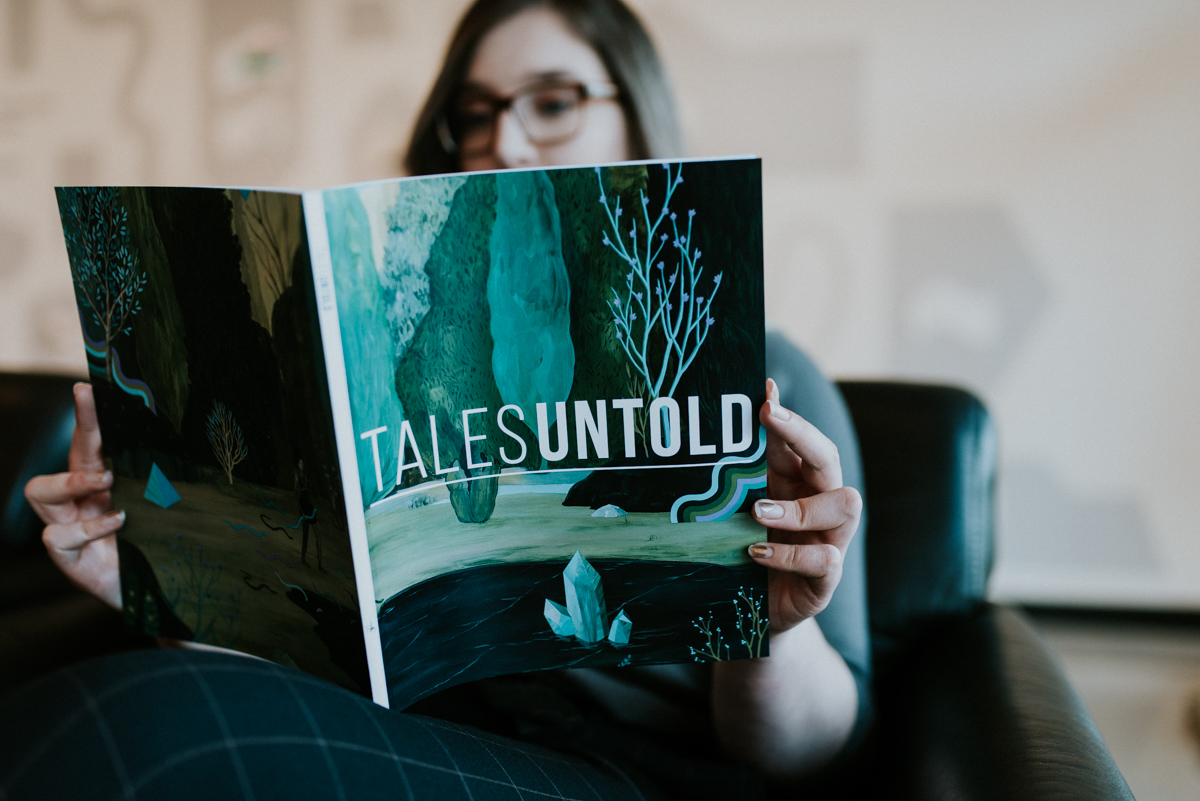
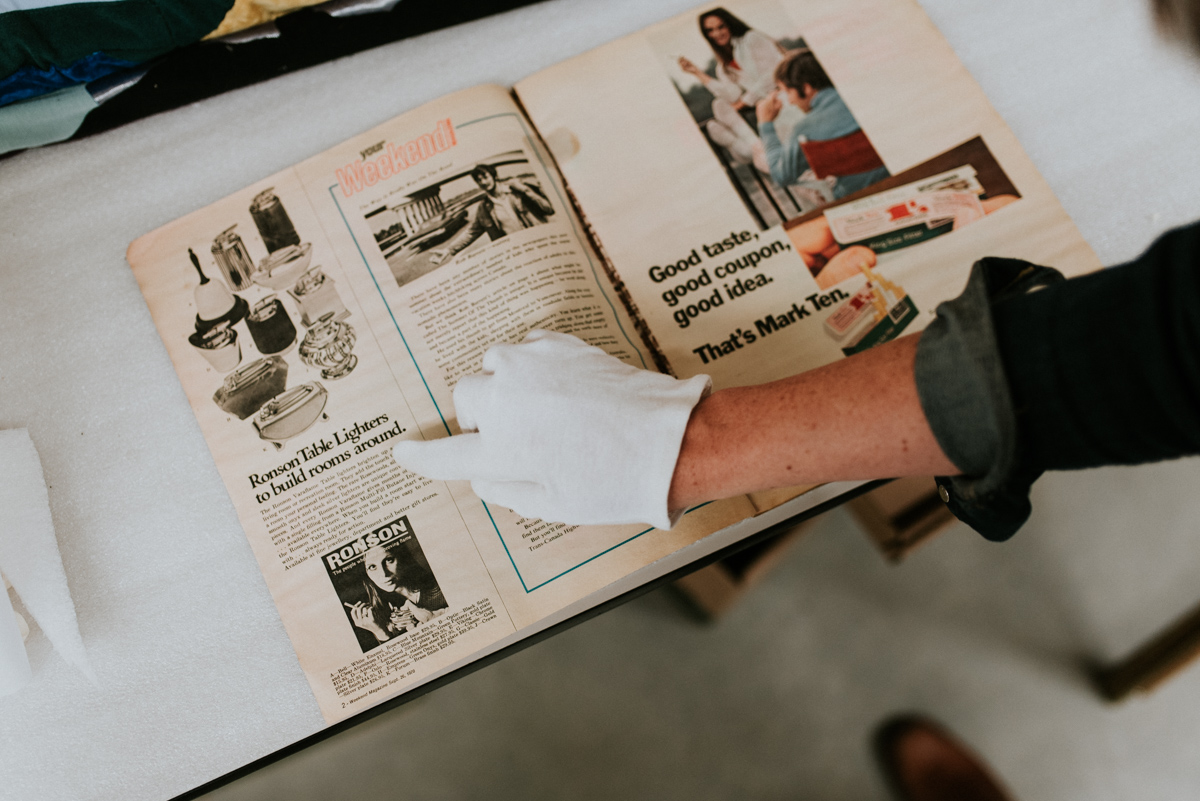
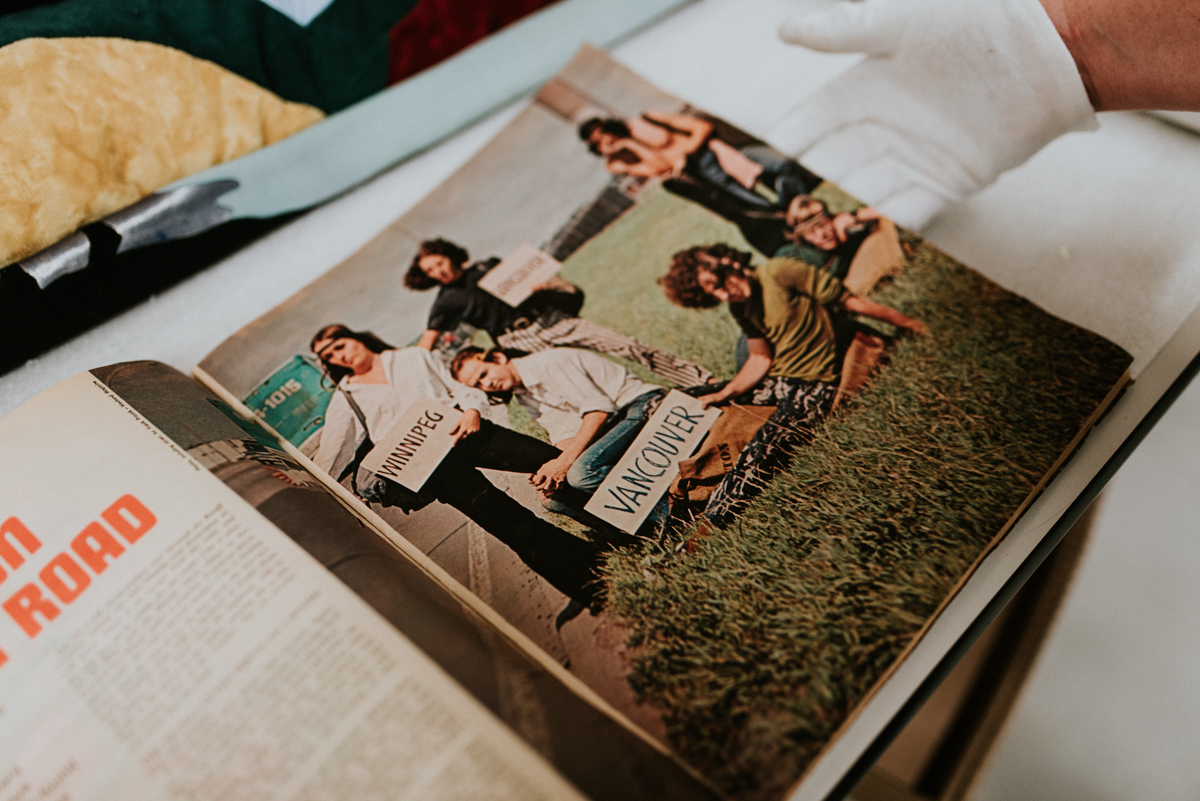
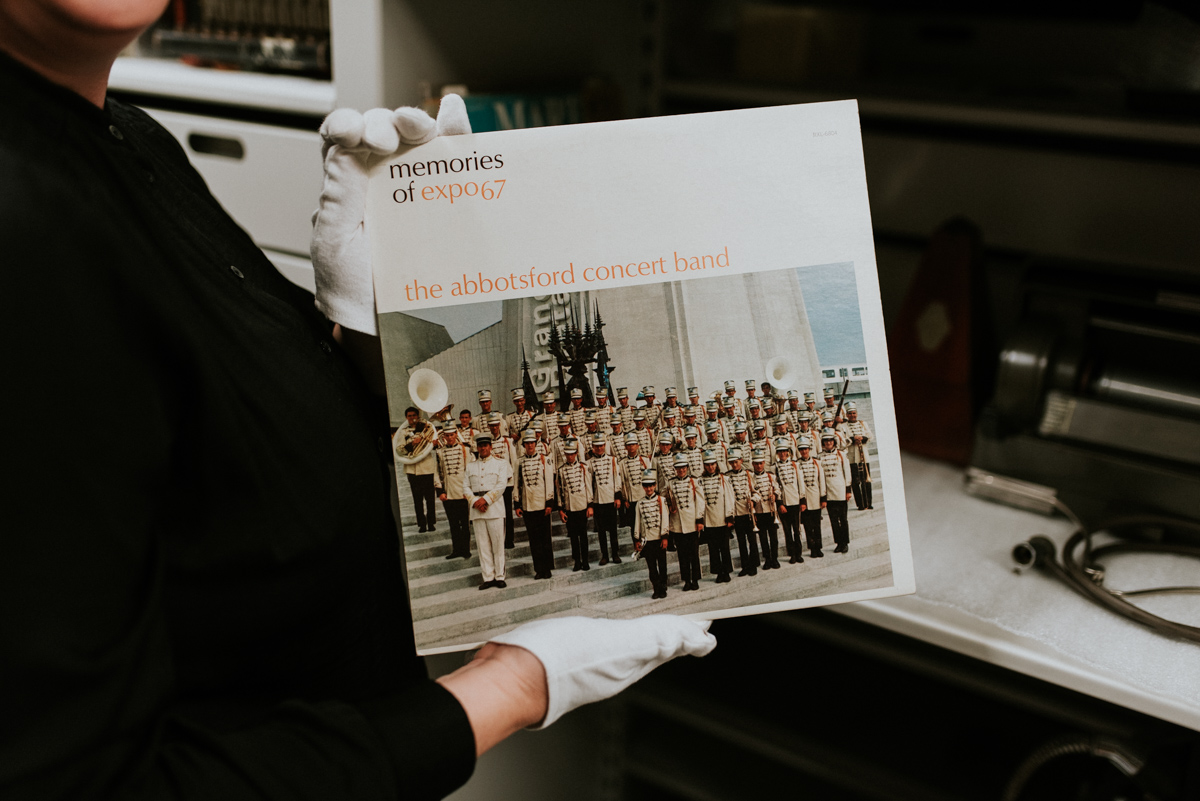
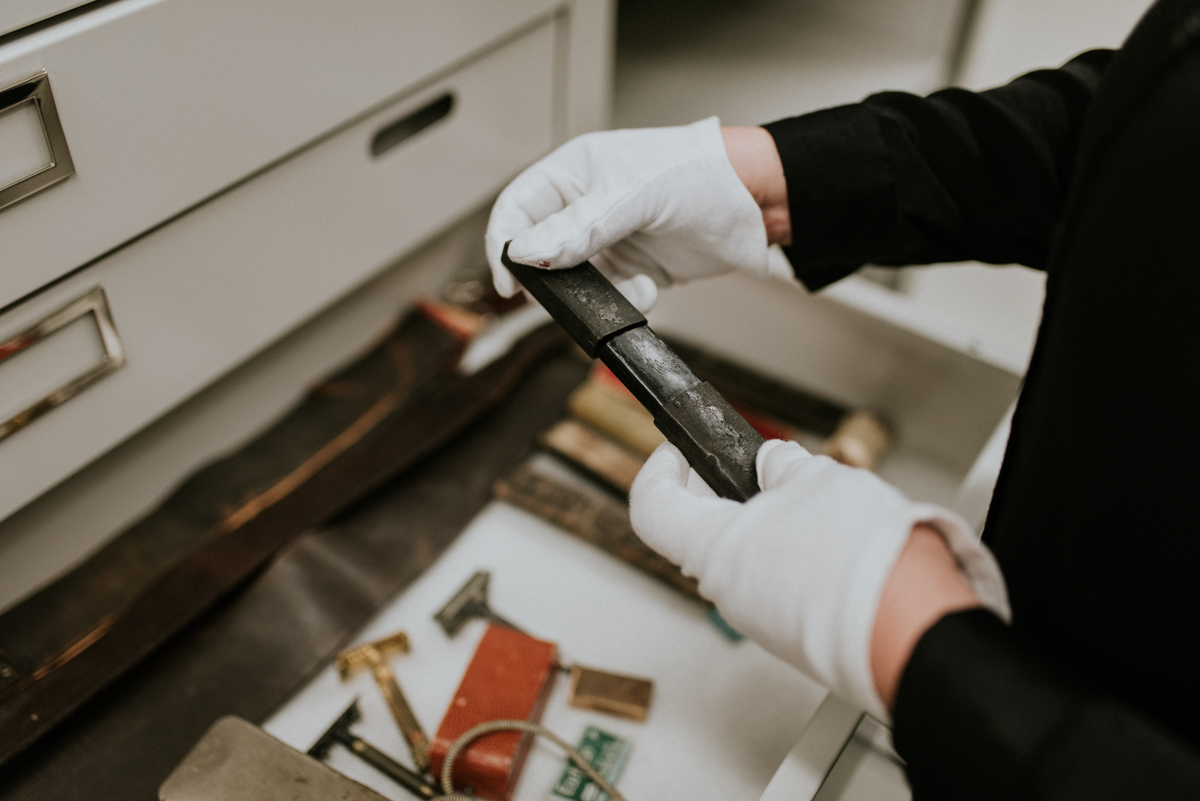
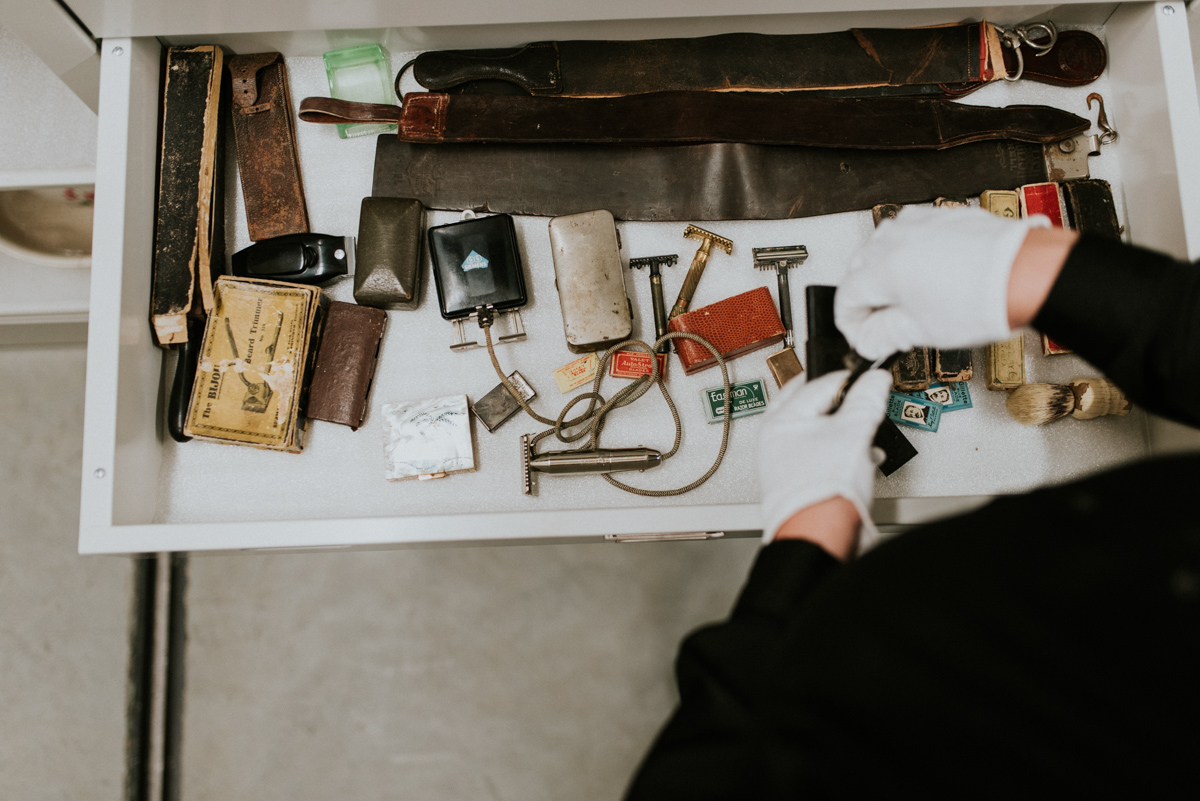
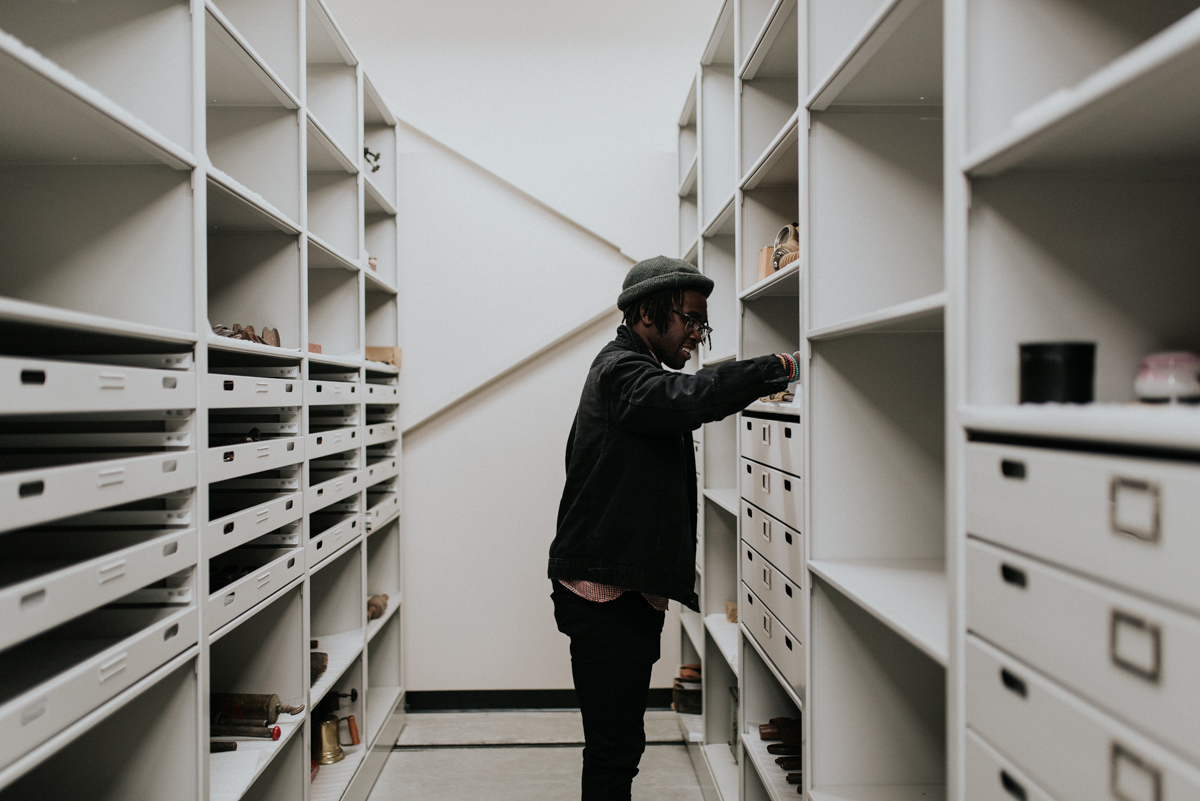
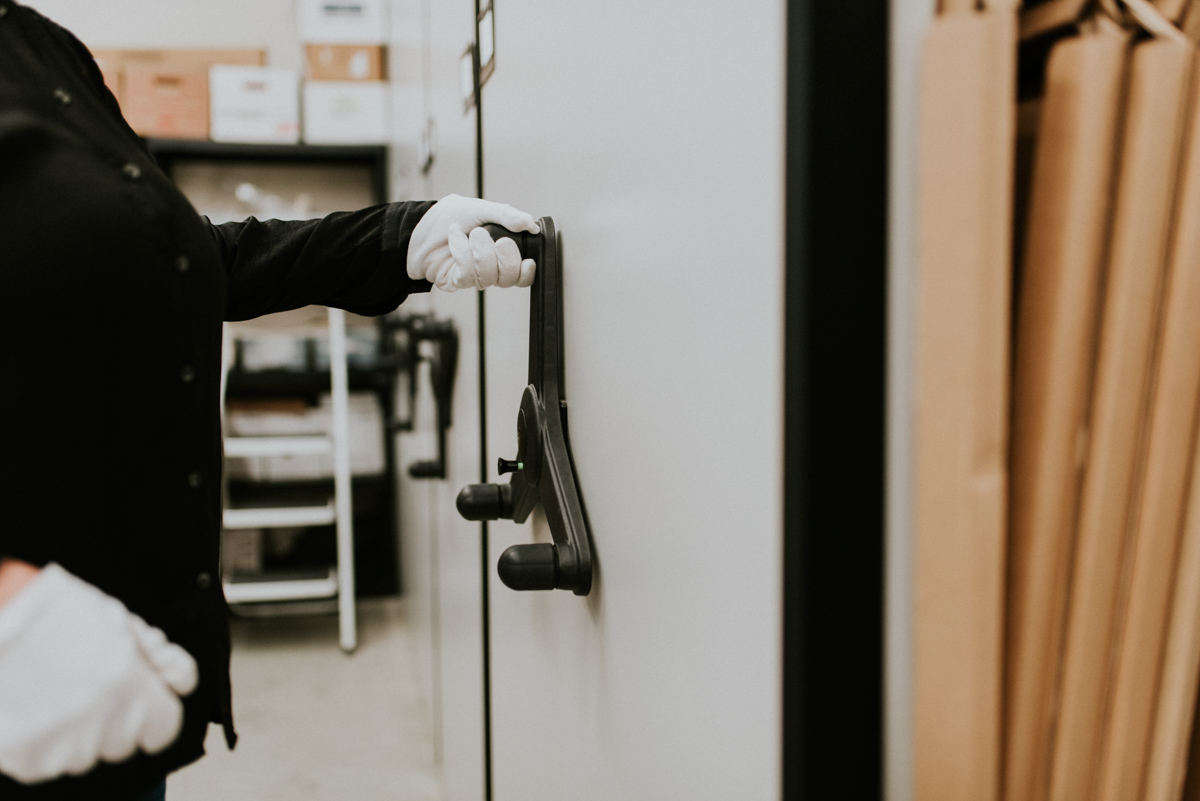
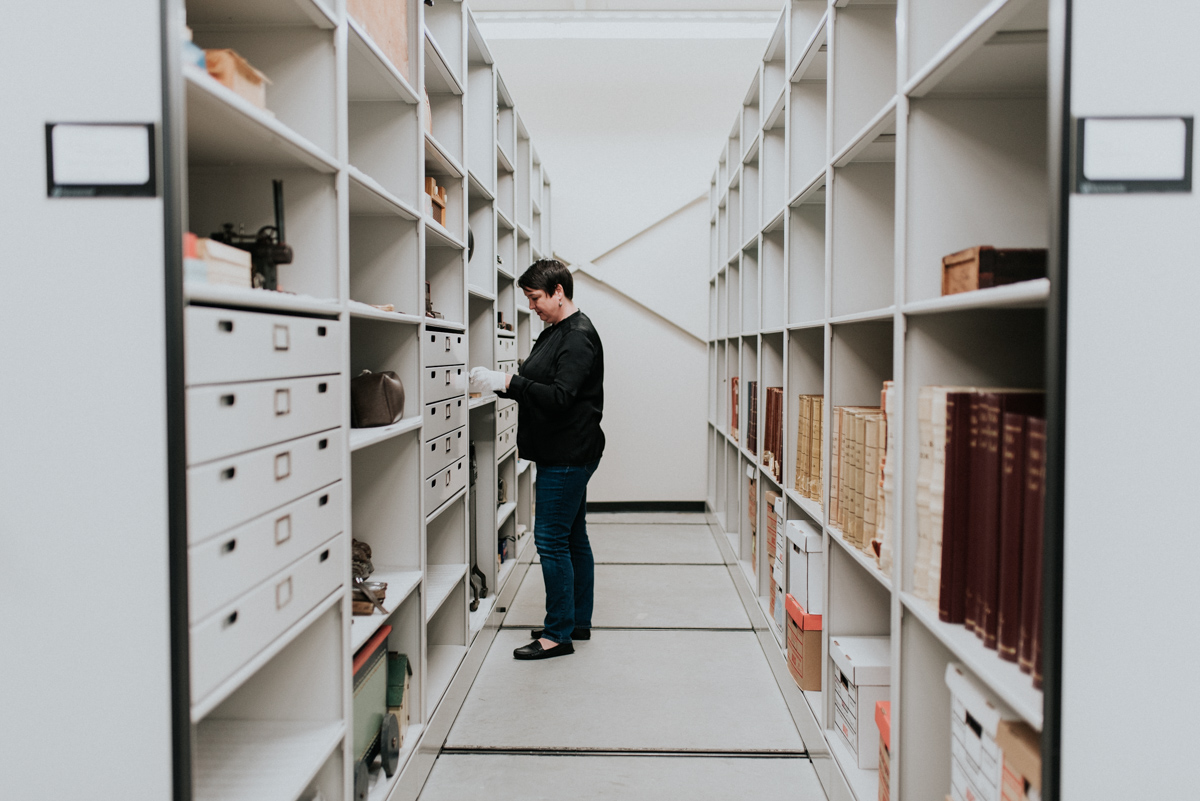
TFV: How would you describe your perfect day in the Fraser Valley?
MF: A morning hike at Willband Creek Park near Clayburn, breakfast at Roselands, and an afternoon trip to The Reach Gallery Museum.
KF: Brunch and shopping at Tanglebank Bistro and Gardens, a day in my garden followed by dinner at one of Abbotsford’s great restaurants. If there’s one playing, an evening of local theatre.
AP: A rainy afternoon with a stop at Old Hand for a coffee, and an outdoor adventure in Aldergrove Regional Park.
LS: A long afternoon hike on one of the incredible trails near Cultus Lake, a steaming hot bowl of pho from Vi-la Palace for dinner, followed by drinks with friends at the Bow and Stern.
AW: A big hike up one of the mountains in the Chilliwack river valley followed by a potluck with friends and a fire.
EC: A long bike ride on the Discovery Trail enjoying the fall leaves, wildlife sightings, and views of Mount Baker. Afternoon coffee at Pacific Coffee Roasters. Evening dinner at Brodeurs Bistro followed by a local theatre production, a movie, or playing board games at Boardwalk Café.
FM: Start off the day with a delicious brunch at Townhall, followed by a few baked treats from down the road at Duft & Co. Take my coffee to go and drive out to the Matsqui Trail Regional Park and bike along the Fraser River. To finish off the day I would head over to Rockos and grab a milkshake and some yummy food.
CH: Breakfast at Little Brother Brunch and shopping in Downtown Abbotsford, a scenic drive through Straiton on Sumas Mountain, lunch at the Clayburn Village Store, finishing off with dinner and a movie at Highstreet.
TFV: If each of you could recommend one place in the Fraser Valley, what would it be? And why?
MF: Sumas Mountain Regional Park. There are so many spectacular views of Chilliwack and east Fraser Valley from the Lookout Trail.
LS: I highly recommend visiting the Gur Sikh Temple and Sikh Heritage Museum. Beyond its importance as a piece of built heritage and its role in the history of our own community, it is the oldest existing gurdwara (Sikh Temple) in North America, and a recognized as a national historic site.
AW: I would recommend visiting the S’eliyemetaxwtexw (S-uh-lee-uh-mut-out-ook) Art Gallery at the University of the Fraser Valley. The UFV art department always has interesting student work to showcase in this space!
EC: Great Blue Heron Nature Reserve between Abbotsford and Chilliwack. Tranquil place to take a walk and enjoy the heron sightings.
FM: Stave Lake flats are a beautiful place to visit! Even on the grey days the surrounding beauty is always breathtaking. When the water is still you can get some stunning shots of the mountains reflecting in the water like a mirror. Sayres Lake Campground is also a very pretty spot in the same area for either a day trip or an overnight stay.
CH: The Clayburn Village Store! I still encounter people who have lived in the Fraser Valley for years and have never even heard of it. They have a gorgeous tea room, imported British goods and so many delicious candies. Basically it’s like having our very own Willy Wonka!
TFV: What’s one thing you want people visiting the Fraser Valley to know?
MF: The Fraser Valley isn’t trying to be the Greater Vancouver area. We like the slower pace of things out here.
KF: There’s so much to explore and do. It’s well worth a regular visit!
LS: The Fraser Valley has the best of all worlds, it has the heart of a small town, quick access to some of the most incredible outdoor spaces, a really convenient airport, and it’s a stone’s throw from some great metropolitan areas.
AW: The Fraser Valley is home to many talented people working in all different means of creative expression. These people are forming stronger bonds with each other every day and it’s clear a thriving arts and culture scene is not far off for the Fraser Valley.
EC: I’ve lived here in the Fraser Valley my whole life, and while it’s grown rapidly, I still enjoy the spacious feel compared to big cities, and it’s just so beautiful here with the best view of snowy Mount Baker around!
FM: The Fraser Valley is more than just a place to drive through to get to the big cities. We have so much to offer whether it is outdoor adventures or quaint places to catch up and grab some yummy food and amazing coffee. We are a happy mix of so many different cultures and innovators all working together to create unique and balanced communities.
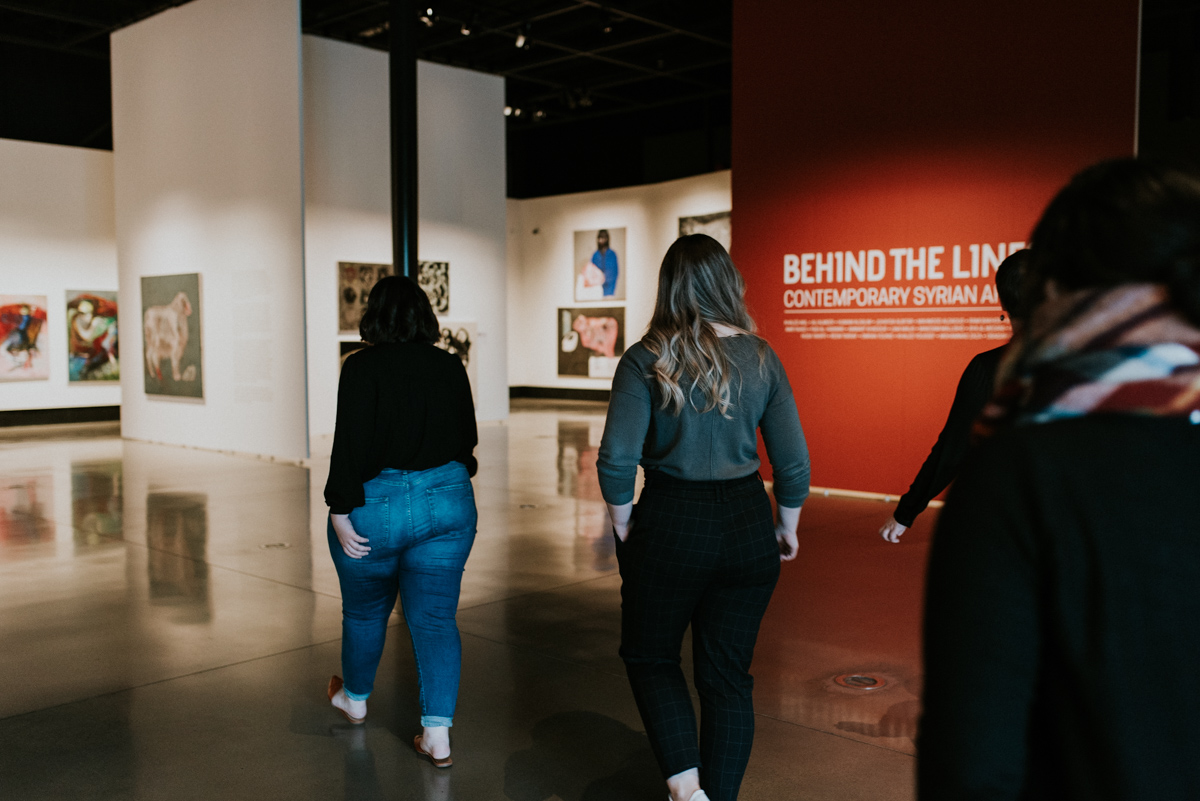
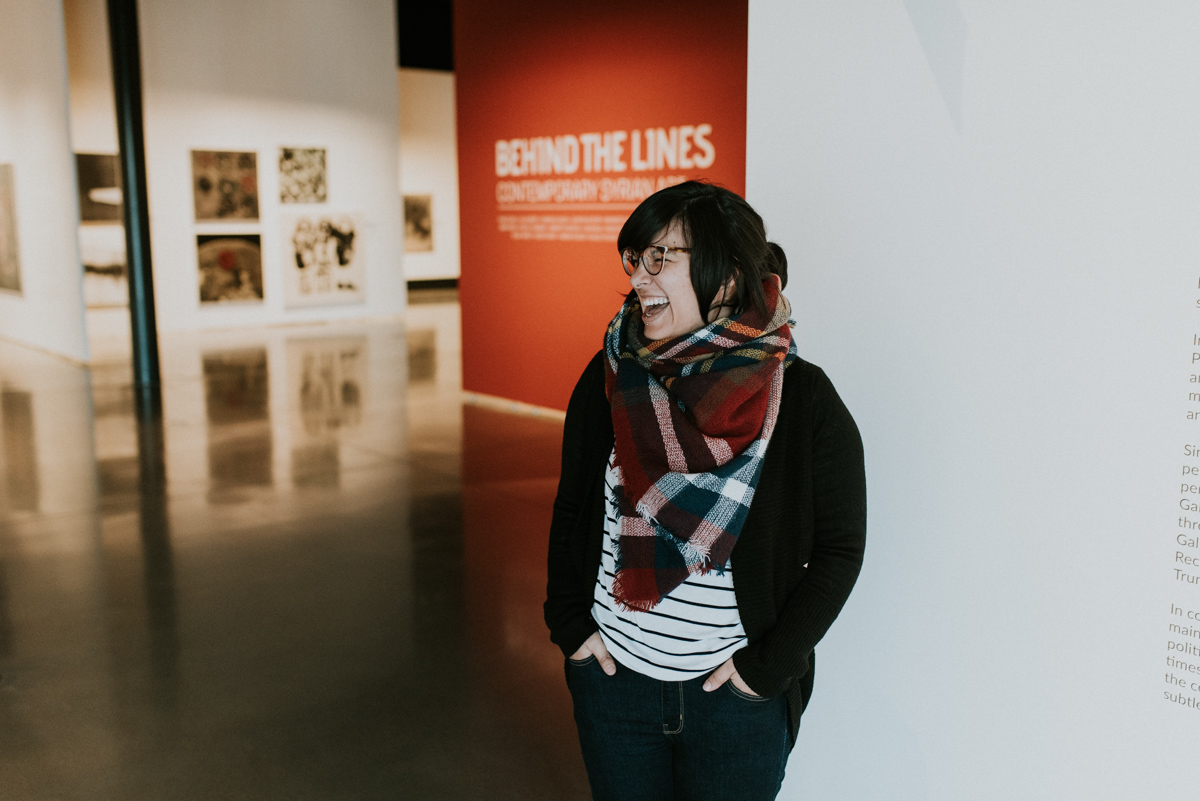
Inspired by the programs they offer for our community, and the artists they share from Fraser Valley and beyond, there is no doubt we will be setting reminders to alert us for each of The Reach’s three annual exhibit launch’s this coming year.
